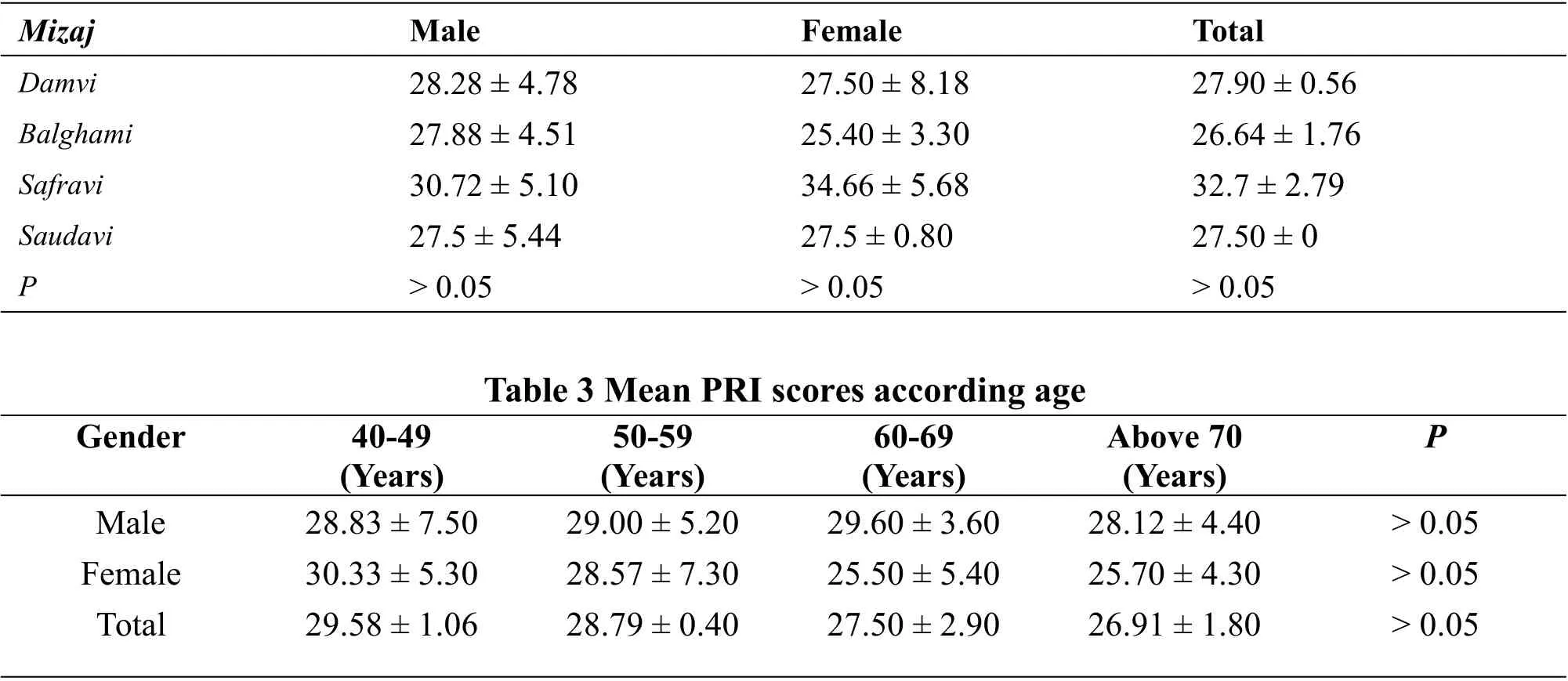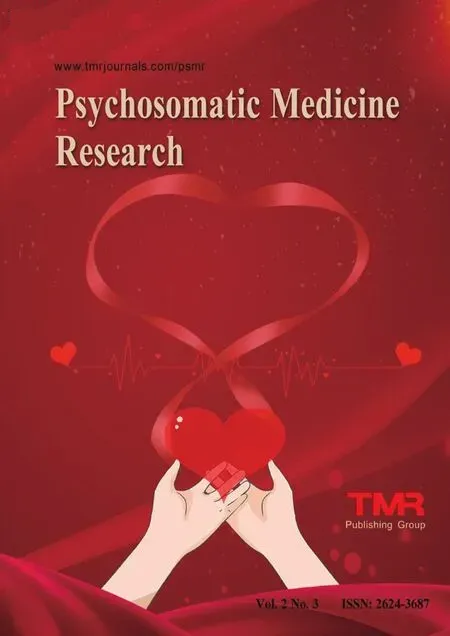Individual with different Mizaj have different sensitivity to pain: a hypothesis
Zeenat Idreesi*, Amir, Yusuf Jamal
1Research Scholar, Department of Physiology, Ayurvedic and Unani Tibbia College, New Delhi, India;2Head of Department,Professor,Department of Physiology,Ayurvedic and Unani Tibbia College,New Delhi,India.
Abstract
Keywords:Pain,PRI,Alam,Mizaj,Tafarruk-e-ittesal,Waja
Background
Mizaj is a new and median kaifiyat (state) which appears after action and reaction of different kaifiyat(qualities) of Anasir (Elements) [1]. The concept of Mizaj is the basis of human health, disease, diagnosis and treatment in Unani medicine system. Assessment of Mizaj is done by Ajnas e Ashra which consist of 10 features about morphological, physiological and psychological, and divided into four categories known as Damvi (Sanguine), Balghami (Phlegmatic), Safravi(Choleretic), Saudavi (Melancholic). As four akhlat have their own individual Mizaj, they (humours)combine and intermix in different quantities to form body fluids, so Mizaj of human body depends upon which humour is dominant or the quantity of which humour is present in access in an individual [2].Pain is an unpleasant sensory and emotional experience associated with actual or potential tissue damage, or described in terms of such damage [3].McCaffery and Pasero offered a clinically useful definition that pain is whatever the experiencing person says it does [4]. Pain is a most primitive, an unpleasant sensation of all senses [5]. It is also known as most important protective sensation and having signal in our nervous system, as a person draws away from injury source as soon as possible after feeling pain.A person has many conditions /sicknesses of the body but not all cause pain.A physician can diagnose a disease to very great extent on the different qualities of pain [6]. It is a major symptom in many medical conditions, and can interfere with a person's quality of life and general functioning[7].
Pathophysiology of pain
Pain receptors
Central nervous system (CNS) has different type of receptor for carrying information from different parts of the body to CNS; these receptors are called sensory receptors. A sensory receptor is defined as it is a biological transducer which can convert various form of energy into action potential in sensory nerves to which they are connected. Receptors for pain are also sensory in nature and these are free nerve endings in different part of body. These do not have any obvious special structure in it [5].These pain receptors are also known as nociceptors. They can be found in every tissue of the body except the brain [8]. Pain receptors are connected to the Aδ and C fibers respectively.These fibers carry pain sensation from nociceptors to CNS [6].Aδ fibre having diameter of 2-5 micro meter and conduction velocity 12-30 m/sec are thin myelinated and send impulses faster. Their functions are pain, temperature and touch and carry fast pain. C fibres have diameter of<2 micro meter and conduction velocity <3m/sec and their function are pain,temperature sensation. These are unmyelinated dorsal root fibres and carry slow pain,70%nociceptive fibres are C fibers [5]. Pain receptors spreads all over superficial layer of skin in our body. It also found in some internal tissue such as joint surface, periosteum,arterial wall and abdominal viscera’s[6].
Stimuli for pain
Three types of stimuli excite pain receptors, which are mechanical,thermal and chemical.In general,fast pain is elicited by the mechanical and thermal types of stimuli, whereas slow pain can be elicited by all three types. After a tissue injury, some chemical secreted neurotransmitter from the injury site may enhance the sensitivity of pain by free nerve endings like bradykinin,serotonin,histamine,potassium ions,acids,acetylcholine, prostaglandin, and substance P [6].Glutamate & substance P are the neurotransmitters secreted by pain nerve endings. Aδ afferent fibres which transmit impulses of fast pain secrete glutamate.The C type fibres which impulses of slow pain secrete substance P. Tissue damage in local area increases potassium ion concentration or proteolytic enzymes that directly attack the nerve endings and excite pain[9].
Types of pain
Fast Pain.Whenever a pain stimulus is applied first sensation immediately after an injury in the form of sharp localized pain is felt which is known as fast pain.Fast pain is felt about 0.1sec after given stimuli and known by acute, sharp or pricking and electric type of pain.Fast pain is followed by slow pain and carried by Aδ fibres at higher speed [10]. Fast pain is not felt in deeper tissue[8].
Slow pain.After fast pain is felt, a dull, diffuse unpleasant pain sensation is experienced which is called slow pain and is carried by C fibres at slow speed. Slow pain felt after 1sec and more than it and increase slowly and sometime felt in minutes. Slow pain may be excruciating, chronic, burning, aching or throbbing in nature [10]. Slow pain can experience in both the skin and in deeper tissue or organs [7].Receptors for both type of pain are same such as free nerve endings, but afferent nerve fibres are different[9].
Superficial somatic pain.Superficial somatic pain originate from stimulation of receptors in superficial structure.Skin is called superficial somatic pain[8].
Deep somatic pain.Deep somatic pain arising from deeper structure is deep somatic pain, such as skeletal muscles, joints, tendons, periosteum, fascia etc. They are known as deep somatic pain. It may be poorly localized[8].
Visceral pain.Visceral pain arises from visceral organs due to inflammation, infectious disease, spasm,stretching and distension of organs. Visceral organs have sensory receptors only for pain sensation. It differs from the superficial or surface pain that is highly localized in nature and severe. It is diffusing type of pain[6].
Psychogenic pain.Psychogenic pain is physical pain that is caused, increased, or prolonged by mental,emotional,or behavioural factors.Headache,back pain,or stomach pain are some of the most common types of psychogenic pain.It may occur,rarely,in persons with a mental disorder, but more commonly it accompanies or is induced by social rejection, broken heart, grief, lovesickness, or other such emotional events [11]. Psychological pain causes real physical pain, although the cause is more closely linked to psychological factors, rather than nociceptive or neuropathic changes.In many cases,pain that has been experienced in the past returns via pain memory and causes repeated episodes of significant pain[12].
Hypothesis
Mun Fei Yam et al. considered pain as a concept of sensation that we feel as a reaction to the stimulus of our surrounding, putting us in harm’s way and acting as a form of defence mechanism that our body has permanently installed into its system [13]. The experience of pain is different for every person, and there are various ways to feel and describe pain. This variation can, in some cases, make it challenging to define and treat pain. Pain can be short or long term and stay in one place or spread around the body [14].The term Waja/Alam is used in Unani system for pain.Pain is an unphysical condition of body which is perception and feeling of contrary and opposite condition(kaifiyat)[15].According to Ibn Rushd in his book Kitabul Kulliyat,bad feeling of sensory system is called pain which is due to sue Mizaj har maddi or due to sue Mizaj barid maddi [16].Ali Ibne Abbas Majusi said Waja means pain, change from its physical condition to unphysical condition and this change occure abruptly. Pain decreases strength of body and stops organs from their special functions [17].According to Unani literature every Mizaj has different level of sensitivity as individual of Safravi. Mizaj will have highest sensitivity level and individual of Balghami Mizaj will have least sensitivity level and individuals of Damvi & Saudavi will have in between sensitivity levels. Pain/Waja is a type of sensitivity which affects human body, so it will be different in individuals of different Mizaj, highest in Safravi and lowest in Balghami Damvi & Saudavi Mizaj individuals. We consider pain rating index in different age, gender and Mizaj persons are different; there may be some relationship between them.
Evaluation of the hypothesis
It is an observation correlative study carried out in the department of Physiology of Ayurvedic & Unani Tibbia College & Hospital, New Delhi, India.Total 60 individuals with different age were enrolled. Subjects were given informed consent form to go through the details and sign the consent form. Identification of Mizaj was done with the help of temperament assessment proforma generated by Central Council for Research in Unani Medicine (CCRUM) (Annexure-I),Ministry of AYUSH, New Delhi. Pain rating index(PRI) for pain assessment of each individual was evaluated with MC Gill Pain Questionnaire(Annexure-II). We did in person interview of outpatient during daily OPD’s and in person interview of admitted patient during daily round at bedside,verbally asked the question about which type of pain they were feeling and marked the points as mentioned in questionnaire after that we added all points and got total PRI.
Inclusion criteria.Subjects suffered from different types of pain above 40 years.
Exclusion Criteria:
(1) Person with age below 40 year
(2) Alcoholics
(3) Smokers and tobacco users
(4) Pregnancy
Results
Distribution of subjects characteristics in different groups was showed in Table 1.The mean PRI scores in Damvi Mizaj group is 27.90 ± 0.56, Balghami Mizaj group is 26.64 ± 1.76, Safravi Mizaj group is 32.7 ±2.79 and Saudavi Mizaj group is 27.50. Female in Safravi Mizaj group has higher mean PRI scores than that in male group. The mean PRI scores of female in Balghami Mizaj group has lower than that of Safravi Mizaj group. While in Saudavi Mizaj group male and female has same mean PRI scores. However,the mean PRI scores of in different Mizaj groups has no significant difference (Table 2). The mean PRI scores of in different age groups has no significant difference(Table 3).
Discussion and conclusion
After taking history of 60 patients of different Mizaj and age, the data trend obtained are almost according to our hypothesis. Safravi Mizaj individuals group has highest mean PRI scores and Balghami Mizaj individuals’group has lowest mean PRI scores. There is some difference according to sex in same Mizaj individuals group. Compared with the male, female in Safraviyat Mizaj goup have more sensitivity for pain than that of Balgamiyat Mizaj. because characteristics of Mizaj are more prominent in female than male. As for age there is only mild difference in PRI up to the age of 60. However, these results are not statistically different, which may be related to the small sample size.

Table 1 Distribution of different Mizaj in different groups

Table 2 Mean PRI scores according to Mizaj
 Psychosomatic Medicine Resesrch2020年3期
Psychosomatic Medicine Resesrch2020年3期
- Psychosomatic Medicine Resesrch的其它文章
- Etiological analysis of chloasma from view of Western and Chinese traditional medicine
- Research progress on rapid psychological regulation of pathogenic microorganism epidemic situation
- Explore the mechanism of Yueju pill in treating depressive polycystic ovary syndrome based on internet pharmacology
- The effects of acupuncture and moxibustion on allergic asthma rats
